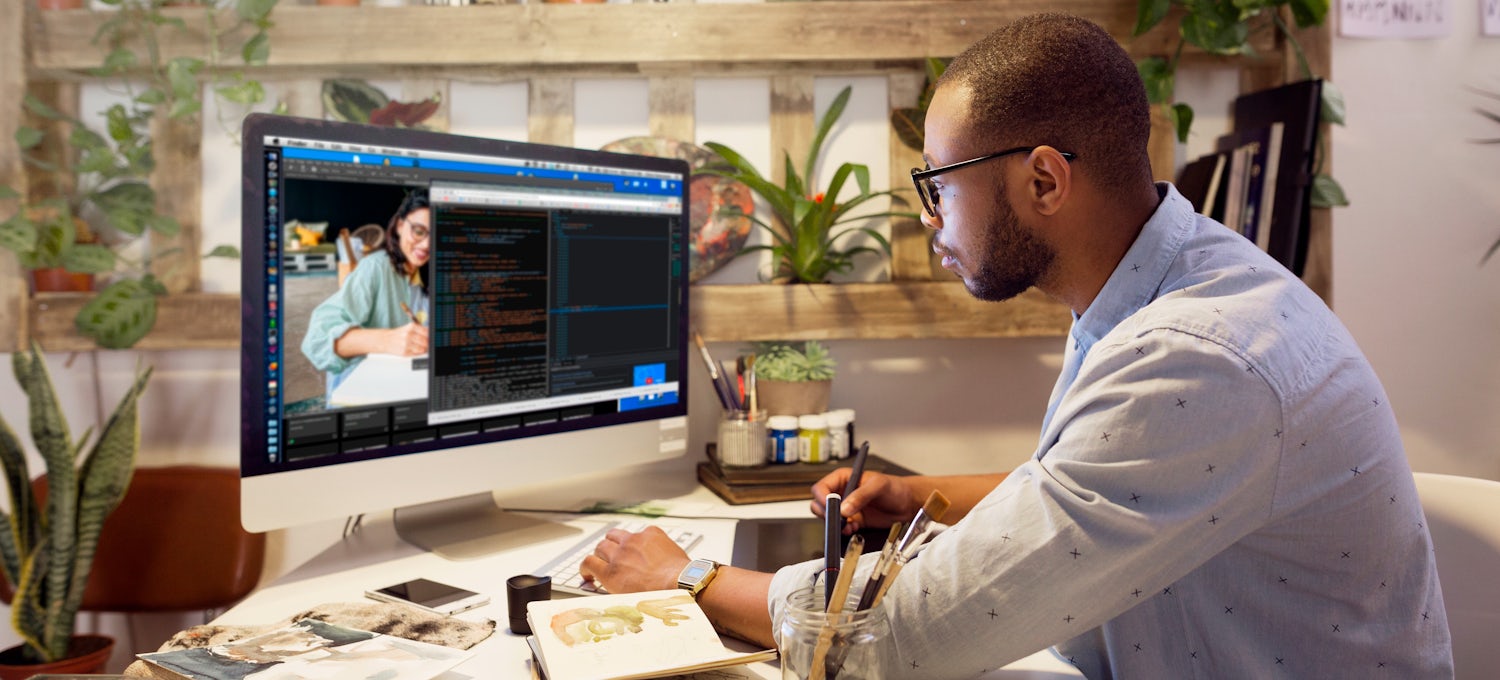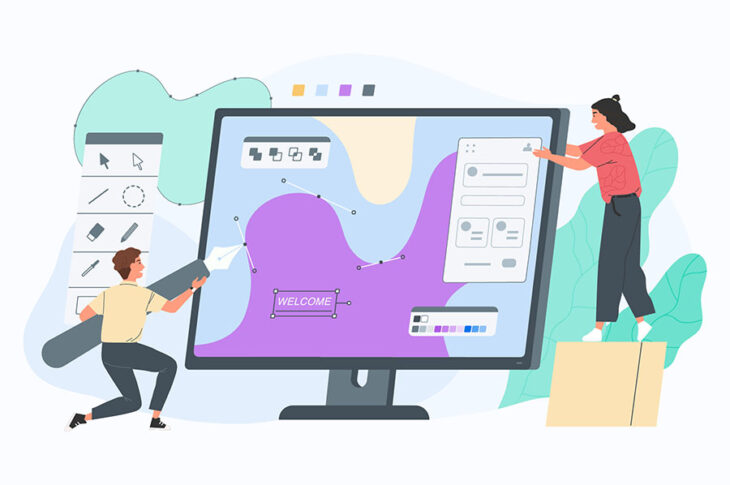Innovative and Responsive Webwize Tomball Web Design
Innovative and Responsive Webwize Tomball Web Design
Blog Article
Master the Art of Website Design With These Expert Tips and Techniques
In today's electronic age, having a properly designed and visually attractive website is critical for any kind of business or private seeking to make a mark online. Grasping the art of web style requires more than just an eye for looks. It involves a deep understanding of customer experience, performance, and the most up to date techniques and fads. So, how can you raise your internet style abilities to the next level? In this discussion, we will certainly check out professional pointers and techniques that will certainly not only boost the visual charm of your site yet additionally enhance its usability and efficiency. From selecting the appropriate color palette to including reliable call-to-actions, these insights will aid you create an internet site that not only captivates your audience yet likewise drives results.
Picking the Right Shade Combination
When choosing a color palette for web design, it is necessary to think about aspects such as brand name identity, target audience, and general visual objectives. The shades made use of in a web site can significantly influence exactly how customers communicate and regard with the site. As a result, it is critical to choose colors that straighten with the brand name's identification and values. A tech firm may decide for a contemporary and streamlined color scheme, while a kids's brand name may choose intense and playful shades.
In addition to brand identification, the target audience should also be taken right into factor to consider when picking a shade scheme. Recognizing the choices and assumptions of the target audience can help create a engaging and visually attractive internet site.
Finally, the total aesthetic objectives of the website should be considered when choosing a shade scheme. The shade scheme should enhance the total style and layout of the website, developing a aesthetically attractive and cohesive experience for users. Whether the objective is to produce a soothing and peaceful environment or an energised and vibrant environment, the shade combination need to be meticulously picked to accomplish the wanted visual.

Creating Easy To Use Navigating
To enhance the customer experience, it is vital to create instinctive and easy-to-navigate menus for web sites. User-friendly navigation is vital for guiding site visitors via the different sections and web pages of a site, permitting them to promptly locate the content they are searching for. When creating the navigation menu, simplicity is key. Stay clear of littering the food selection with a lot of choices, as this can overwhelm users and make it hard for them to choose. Rather, concentrate on providing clear and concise tags for every menu item, making use of acquainted terms that individuals can quickly comprehend.

In enhancement to clear tags and logical organization, it is very important to make the navigation food selection conveniently accessible. Put it in a popular area, such as on top of the web page or in a set placement, to make sure that users can easily find and access it from anywhere on the site. Think about using a receptive layout strategy to make certain that the inexpensive web design navigating menu remains accessible and useful on various tools, including smart phones and tablets.
Incorporating Receptive Layout Strategies
In order to maximize web site performance across different gadgets, integrating responsive style techniques is important. Receptive layout is a website design approach that enables websites to adjust and respond to various screen sizes and positionings. With the enhancing usage of mobile phones and tablets, it is critical for web designers to produce websites that give an ideal watching experience for users on all tools.
One of the crucial techniques in receptive design is the usage of liquid grids. Instead of making fixed-width layouts, internet designers produce adaptable grids that adjust and resize based on the display size. This makes sure that the material on the internet site remains accessible and legible, regardless of the gadget being used.
An additional crucial technique is the usage of versatile photos and media. By establishing the maximum size of images and video clips to 100%, they will immediately reduce to fit smaller screens. This protects against pictures from being reduced off or distorted on mobile gadgets.
In addition, receptive design includes utilizing media questions to use different styles and layouts based on the gadget's display dimension. This permits internet designers to create a seamless experience by customizing the presentation of material according to the tool being made use of.
Optimizing Website Speed and Performance
One critical facet of internet style is enhancing site speed and performance. A sluggish web site can lead to an inadequate user experience, high bounce rates, and lower search engine rankings.
Firstly, enhancing photos is crucial for boosting internet site rate. Images must be appropriately pressed and resized to reduce their file size without sacrificing quality. This can be done using image optimization tools or plugins.
An additional important element to consider is website caching. Caching entails keeping static variations of web pages so that they can be quickly gotten rather of generating them from square one each time an individual visits the website (Webwize web design Tomball). This substantially decreases filling times and improves overall efficiency
Minifying CSS and JavaScript files is one more effective method. Getting rid of unnecessary whitespace, comments, and lowering code complexity can considerably improve site rate.
Implementing Effective Call-to-Actions
Producing convincing and engaging call-to-actions is an essential element of reliable website design. A call-to-action (CTA) is a punctual or direction that motivates individuals to take a specific action on an internet site, such as purchasing, registering for a newsletter, or speaking to the company. Executing efficient CTAs can substantially boost user engagement and conversion rates.
To create compelling CTAs, it is crucial to utilize succinct and clear language that conveys the value recommendation and advantages of taking the preferred activity. The CTA must be aesthetically famous on the web page, utilizing contrasting design and colors aspects that draw the user's attention. Additionally, using action verbs and you could check here creating a feeling of necessity can additionally improve the efficiency of the CTA.
Furthermore, it is very important to position the CTA strategically on the web page. important source Positioning it above the layer, where it is immediately noticeable to customers without requiring to scroll, can considerably enhance its visibility and click-through prices. It is additionally helpful to check different variants of CTAs to establish which ones reverberate finest with users and drive the highest possible conversion prices.
Final Thought
To conclude, mastering the art of web layout calls for interest to various components such as shade combination choice, user-friendly navigation, responsive layout methods, site rate optimization, and efficient call-to-actions. By executing these expert pointers and techniques, internet designers can develop functional and aesthetically attractive websites that boost user experience and drive wanted actions.
The shades utilized in a website can considerably influence exactly how individuals connect and perceive with the website.In order to optimize internet site performance throughout various tools, incorporating responsive layout techniques is essential. Responsive layout is an internet design technique that allows sites to adjust and respond to various screen sizes and alignments. With the enhancing usage of tablet computers and smartphones, it is vital for internet designers to produce web sites that provide an ideal watching experience for users on all gadgets.

Report this page